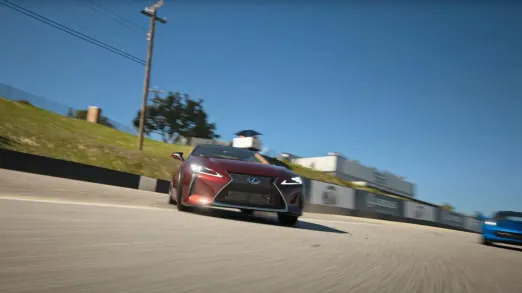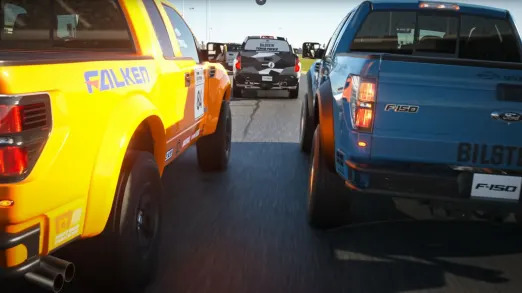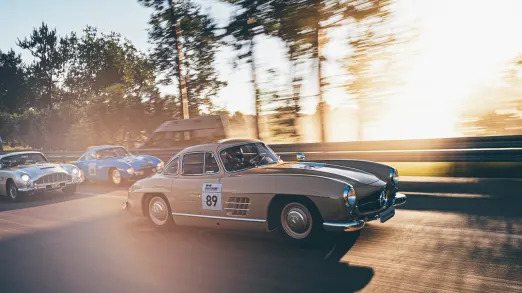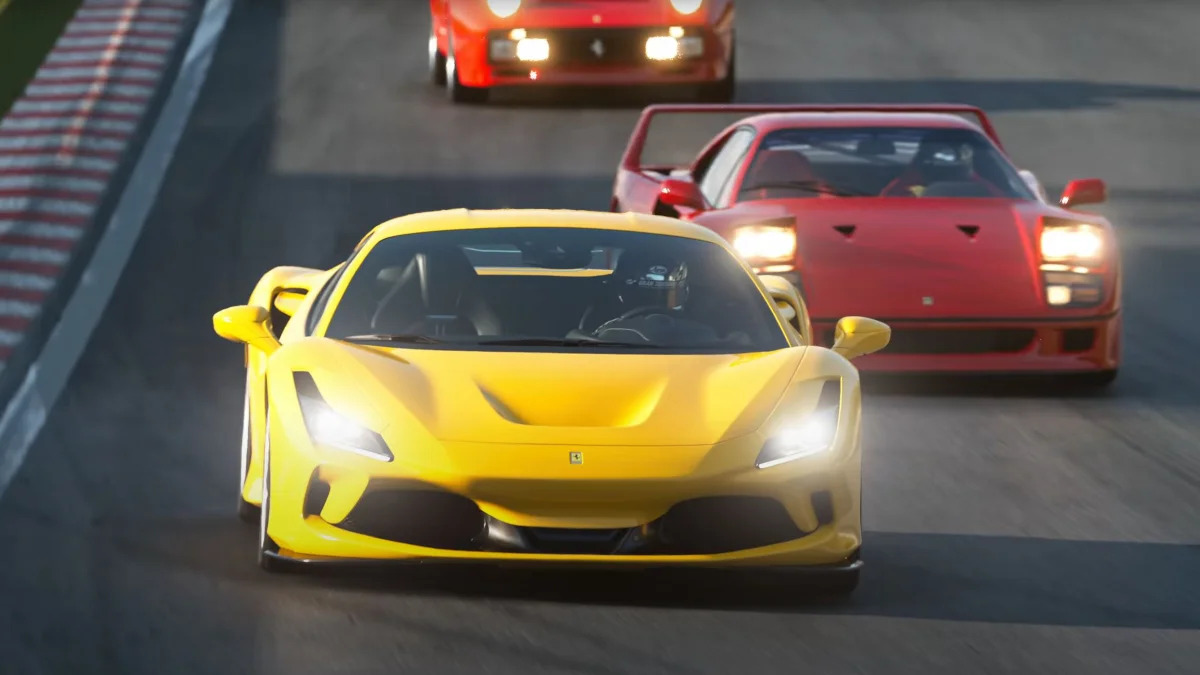For a lot of gamers and car enthusiasts alike, the launch of Gran Turismo 7 is a seriously big deal. Not only is this a series that's been around for 25 years, it's been a damn long time since players have had a full release. It's been about five years since the last GT title came out (Gran Turismo Sport for PS4), and that wasn't even a fully-fledged GT game. It was a fun experience, and one that was supported with free updates and expansions that made it better, but it was always an odd experiment. And when talking about the full GT releases, it's been a whopping nine years since GT6 launched, and that was on a console that's two generations old. So a full title on a still fresh console means expectations are pretty high. The good news: those expectations, for the most part, have been met or surpassed.
Right off the bat, it's a gorgeous game and runs superbly. There are two graphics settings available on the PlayStation 5. The first is the whole enchilada with ray tracing in almost every aspect of the game from menus displaying cars to the replays. The one exception is in racing, in which ray tracing is turned off in favor of maintaining a framerate of 60 FPS in driving to make sure players get a smooth and clear racing experience. And it's a practically unflinching framerate. The second option will switch off ray tracing everywhere else in case you want the full framerate everywhere in the game. No matter what, all the cars are modelled beautifully, and unlike GT5 and GT6, every car gets full models inside and out, none of that "premium" and "standard" nonsense from back then. The cars do look especially incredible in replays and photos with the detailed reflections and lighting. Speaking of lighting, the skies and lighting in the environments are particularly standout, too, and it makes Polyphony's efforts to simulate weather patterns seem like an integral part of the game, instead of a weird tangent.
We didn't have an opportunity to try out the game on PS4 systems, which are compatible with the game. But if you're curious about the graphical differences and loading differences, you should really check out the comparison done by Digital Foundry. Long story short: Resolution, environmental detail and draw distance are all reduced, but it's still roughly comparable to GT Sport, which is still a looker. Loading times are significantly increased as well, but all of these downgrades wouldn't keep us from picking up the game for the last-generation systems.


And part of the reason for that is simply that there's so much to do in GT7. It has a healthy campaign that brings back single races, championships, license tests, photo mode and missions from much older entries in the series. It also revives "Circuit Experience" from GT Sport as well as the robust online modes. A new mode, called Music Rally, will likely be your first experience, since it's the minigame that can be played as the game is installing. It's a neat arcade-style mode in which you need to drive a certain distance before a song has finished playing. There are loads of performance parts for upgrading cars, and a small but welcome smattering of visual upgrades for customizing cars. The livery editor is even more robust as it now features the ability to put decals on windows. And there's now the GT Cafe, which is arguably the core of the GT7 experience.
The Cafe is set up as a cozy little place in the woods, and the purveyor gives all sorts of goals called "menus" to encourage you to experience every corner of the game. Some menus focus on collecting types of vehicles, some modifying cars, some completing events. And this is a clever system for a variety of reasons. It helps make GT7 the most approachable title in the series, as it helps guide new players through all the different modes and how to prepare cars for racing. Each menu tends to lead into the next one, usually helping players obtain vehicles they'll need for later ones. It's also nice for experienced players, as it provides some structure to what's otherwise an extremely open-ended game. But it also doesn't restrict you from doing other things. Or at least mostly. Many sections of the game, and even some track locations are locked behind these menus. But experienced players shouldn't find the menus difficult to complete, and there are many rewards for completing them, something that helps alleviate some of the grinding GT games are known for.
But one of the other lovely things about the Cafe and its menus is that it sets the tone for the game: which is an unabashedly gushing love letter toward all things automotive. Collecting each set of cars rewards players with gorgeous walkarounds of the different vehicles, and brief, sometimes overzealous explanations of why the featured cars are important. That also ties into the far more detailed descriptions that accompany every car, which can be viewed in the garage. It also forces players to experience a wide variety of vehicles and learn what's special and interesting about each of them. And certain vehicles can prompt digital versions of famous car designers and engineers to pop in. You can talk to them and learn stories about the vehicles they worked on.


As for those cars, GT7 boasts a healthy car list, but it's still smaller than past entries. It's far better balanced than many past games, having reduced the number of negligibly different editions of the same kinds of cars. There are far more cars from European and American brands than ever before. The downside of this is that many of the strange and more obscure models GT games have been synonymous with are absent (such as tiny Japanese kei cars, extremely old things like the Ford Model T). The good news is that Polyphony Digital has already announced that more cars, as well as tracks will appear as downloadable content in the future.
Coming back around to gameplay, something to note is that the driving physics have been further upgraded over past games, and it can be more challenging than those games. It seems that overall tire grip is reduced, and rear-wheel-drive cars are significantly hairier. Hitting objects such as corner curbing feels more harsh and realistic, too, having potentially significant effects on the car's traction and stability. All this should keep GT veterans engaged. And for newer players, there are many assists to make driving easier, and even AI difficulty settings.
For players on PlayStation 5, GT7 takes good advantage of the advanced haptic feedback and variable resistance triggers of the DualSense controller. You can feel in vivid detail the texture of the road, particularly evident on tracks such as Tokyo Expressway with its expansion joints. Even shifts send little pulses through the controller. The triggers get stiff for racing, which on the brake trigger feels realistic since brake pedals are firm and pressure based. The throttle trigger also is stiff, though, which isn't very realistic, and it can get in the way of finer, faster throttle adjustments. It can also start to wear out your hands having to keep gripping the heavy controls.
Gran Turismo 7 isn't perfect, but it's still a superb driving simulator. It has oodles of game modes to keep you busy for hours, and they all offer loads of variety. It's beautiful as usual, and is both more accessible and more challenging than before. Most importantly, though, it's one of the best celebrations of cars, virtual or real.










Sign in to post
Please sign in to leave a comment.
Continue